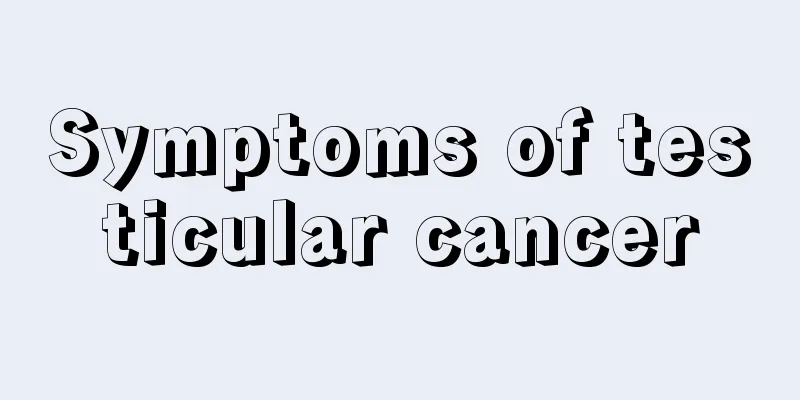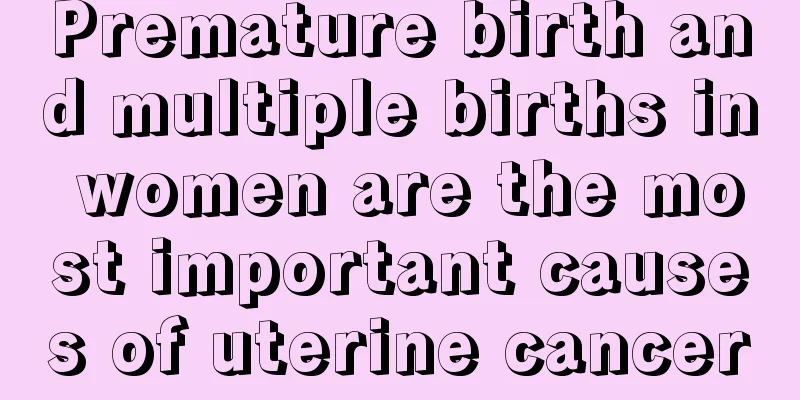Symptoms of testicular cancer

|
Cancer treatment should be based on the principle of early detection, early diagnosis, and early treatment, because early cancer is generally carcinoma in situ. When the disease develops to the late stage, the cancer cells will spread to other parts of the body, making it very difficult to treat and the hope of cure is very slim. Today, I will introduce the symptoms of testicular cancer to you. Most men with testicular cancer present with a swollen testicle. Associated symptoms include heaviness or pain. Severe pain is rare. Because testicular cancer often causes a decrease in sperm count, men occasionally present with infertility. About 20 percent of men present with symptoms caused by metastatic disease. Symptoms of metastatic disease may include back pain, shortness of breath, chest pain, or coughing up blood. Testicular tumor is one of the common tumors in urology. It is almost always malignant, and there are three peaks in the age of onset: yolk sac tumor (infantile embryonal tumor) is the most common in infancy; various types of testicular tumors can be seen between the ages of 20 and 40, but seminoma is still the most common, and seminoma is the main tumor after the age of 70. Its cause is still unclear, and it is currently believed that its onset is related to both genetic and acquired factors. Among them, it is most closely related to cryptorchidism. The chance of cryptorchidism developing tumors is 10 to 14 times greater than that of normal people. Cryptorchidism in the abdominal cavity is higher than that in the groin. Testicular fixation does not reduce the incidence of malignant changes, but it can make tumors easier to detect. The most common symptom is a gradual, painless enlargement of the testicles with a feeling of heaviness. The enlarged testicles of seminoma often maintain the testicular contour and have a consistent texture, while teratoma is nodular and has inconsistent hardness and softness. About 10% of patients feel pain due to intratesticular bleeding or infarction, and 10% of patients may have metastatic symptoms, such as large retroperitoneal lymph node metastasis, compression of nerve roots, back pain, lung metastasis may cause cough and dyspnea, duodenal metastasis may cause anorexia, nausea and vomiting, bone metastasis may cause bone pain, etc. Testicular Leydig cell tumor should be considered when children have testicular masses and symptoms of precocious puberty, or adults have gynecomastia and loss of libido. The cause of testicular cancer is still unknown, and it is currently believed that its onset is related to both genetic and acquired factors. Among them, cryptorchidism is the most closely related. The chance of developing tumors in cryptorchidism is 10 to 14 times greater than that in normal people, and cryptorchidism in the abdominal cavity is more likely than in the groin. |
<<: Clinical symptoms of testicular cancer
>>: What are the common symptoms of testicular cancer
Recommend
The difference between spicy and hot
We often use "spicy" to describe a food...
How long can you live with advanced bladder cancer?
How long can a person with advanced bladder cance...
What to do if spots and yellowing appear on face
As people age, yellow spots gradually appear on t...
Where in the country is the treatment for nasopharyngeal carcinoma effective?
Where is the best place to get treatment for naso...
What food is more effective in clearing lung heat
Lung heat will make the whole person feel uncomfo...
Can I drink yogurt when I'm hungry?
The reason why the human body feels hungry is bec...
Nursing diagnosis for right breast cancer
Breast cancer is one of the most common malignant...
What to do in the late stage of liver cancer to stabilize the condition Diet recommendations for late stage of liver cancer
How to provide daily care for patients with advan...
What can be detected by testing blood serum
Before the serum test, you need to be clear about...
What are the foods in the diet for advanced lung cancer that can reduce the side effects of radiotherapy and chemotherapy for lung cancer?
Nutritional diet for lung cancer patients. Lung c...
Is prostate cancer easy to treat? How long can one live?
The treatment effect and survival of prostate can...
Can't people with thyroid cancer eat celery?
Thyroid cancer patients can eat celery, because c...
Are there any side effects of drinking Panax notoginseng powder regularly?
In our lives, many people often drink some Panax ...
Traditional Chinese medicine can reduce the side effects of radiotherapy and chemotherapy for pancreatic cancer
Radiotherapy and chemotherapy are important means...
What object around you has the strongest radiation?
Fish tank water pump: radiation reaches half of t...









